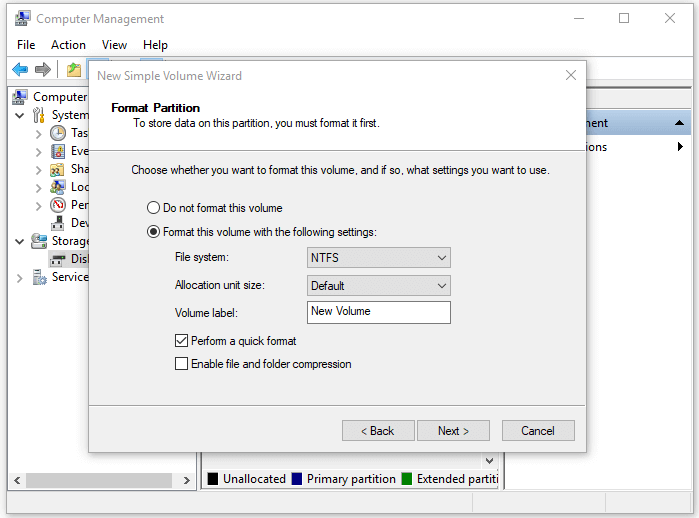

I have an 80GB Seagate external hard drive that I connect to my Windows computer to store files but for some reason, just recently, it has stopped showing up in the 'My Computer' folder. But if it doesn't show up, you might be in a trouble. Right click, create partition, default size will be for the entire section of unallocated space.Usually, when you plug an external hard drive into your computer, it will appear in your File Explorer.If you delete the partition you should end up with 1 large chunk of unalocated space.Delete partition > or Extend (not to sure how well this works if its even available).If you want to wipe and start over i would do the following In side of disk management you manage the drive in most ways simply with a right click. Inside of Console 1 click on Disk Management.Leave on “this computer” then click finish > then OK.inside of MMC (Console 1) go to File > Add/Remove Snap-in… > add Disk Management from the list on the left.

May need to authorize it to run (select yes).Note: If you don’t see Disk Management listed, you may need to click on the |> icon to the left of the Storage icon When Computer Management opens, click on Disk Management on the left side of the window, located under Storage.Īfter a brief loading period, Disk Management should now appear on the right side of the Computer Management window. In the Administrative Tools window, double-click on the Computer Management icon. In the System and Security window, click on the Administrative Tools heading located near the bottom of the window. Note: If you’re viewing the Large icons or Small icons view of Control pannel, you won’t see this link so just click on the Administrative Tools icon and skip to Step 4. Getting to disk management depends on your operating system so im going to assume you have windows 7 but if you dont these steps may varry (can be googled easily though “how to get to disk management in windows (insert version)”Ĭlick on the Start button and then choose Control Panel. You can do this several ways but i think though disk management in windows is the best way (and easiest).


 0 kommentar(er)
0 kommentar(er)
